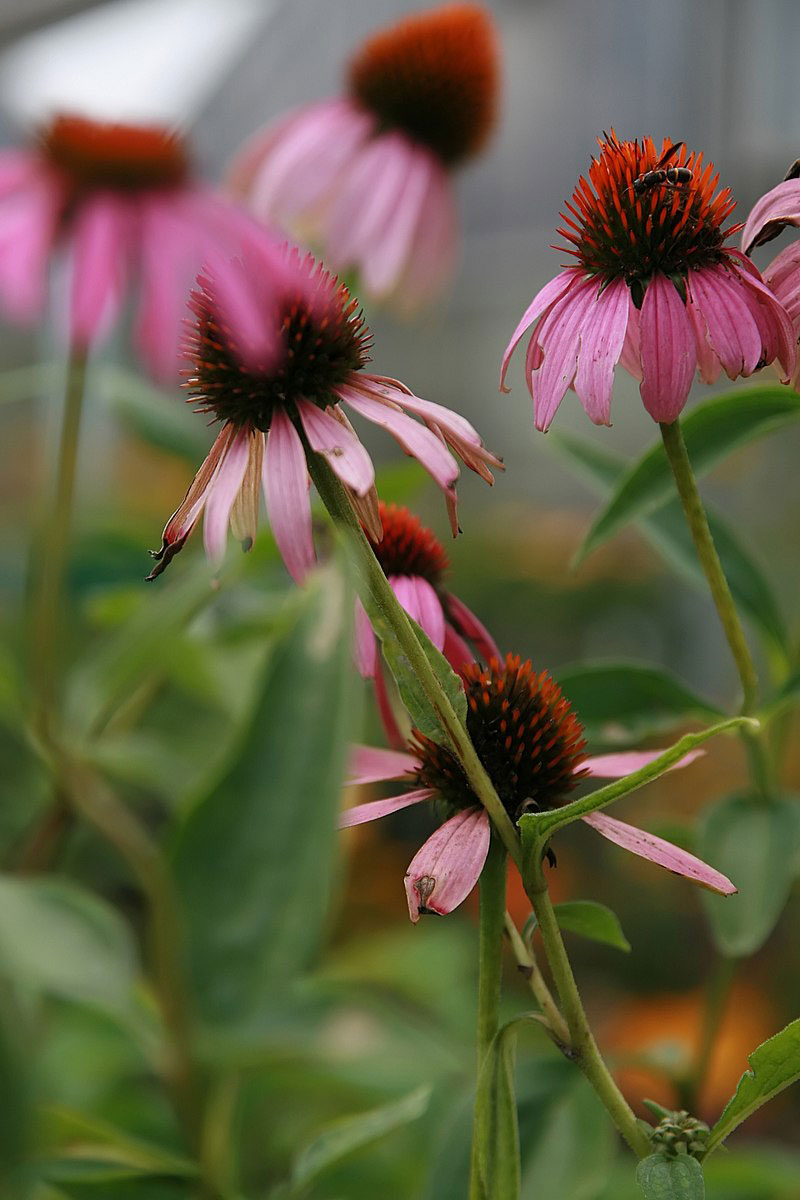Narrowleaf Purple Coneflower
Echinacea angustifolia is a lovely purple flower often used to fight off colds, infection, and other ailments.
Scientific Name: Echinacea angustifolia
Common Name: Echinacea, narrowleaf purple coneflower
Plant Family: Asteraceae
Etymology: Echinacea comes from the Greek word echinos, meaning “hedgehog” or “sea urchin.” This references the flower's spiky appearance!
Indigenous Uses
Indigenous peoples use Echinacea for various medical purposes, primarily as an analgesic (pain killer) for aches and pains of any kind. The Cheyenne used an infusion of leaves and roots, the Sioux used the root in a bowel pain remedy, and a variety of tribes used the juices for a pain-relieving wash for burns. A common headache remedy for many tribes was a smoke treatment using Echinacea. Chewing the root was used to treat tonsillitis, and the root in general was used for oral pain.
Gathering and Using
Harvest roots while dormant. Gather leaves and flowers while in bloom. All of these parts may be used fresh or dried. Be sure to split the flowers before they are dried. While wild varieties may be found in meadows, over-harvesting of Echinacea is a problem. Consider growing your own as opposed to foraging from the wild.
Permaculture Functions and Considerations
The medicinal uses, pollinator value, and overall aesthetics of the plant makes Echinacea a great permaculture plant.
How to Identify
Echinacea can be recognized by its large spiky central cone and the purple color of its flowers. It can grow up to 4 feet tall and is almost never found alone, rather with a cluster of other coneflowers. Each flower is at the end of a long stalk, with its petals perpendicular to the stalk or slated towards the ground. Leaves at a similar length to the petals grow along the stem at periodic intervals.

Sources
- “Echinacea.” Merriam-Webster.com Dictionary, Merriam-Webster. Accessed 1 Mar. 2023
- “Echinacea Angustifolia DC.” BRIT-Native American Ethnobotany Database.
- “Echinacea Angustifolia DC.” USDA Plants Database.
- “Echinacea Angustifolia.” Missouri Botanical Garden-Plant Finder.
- Stang, David. “Echinacea Angustifolia.” File:Echinacea Angustifolia Narrowleaf 2zz.Jpg, 2006. Accessed 1 Mar. 2023.
- Cech, Richo, and Sena Cech. “Echinacea (Purple Coneflower).” Making Plant Medicine, Herbal Reads, Williams, OR, 2016, pp. 164–166.
- Gladstar, Rosemary. “Echinacea.” Rosemary Gladstar's Medicinal Herbs: A Beginner's Guide, Storey Publishing, North Adams, MA, 2012, pp. 129–133.